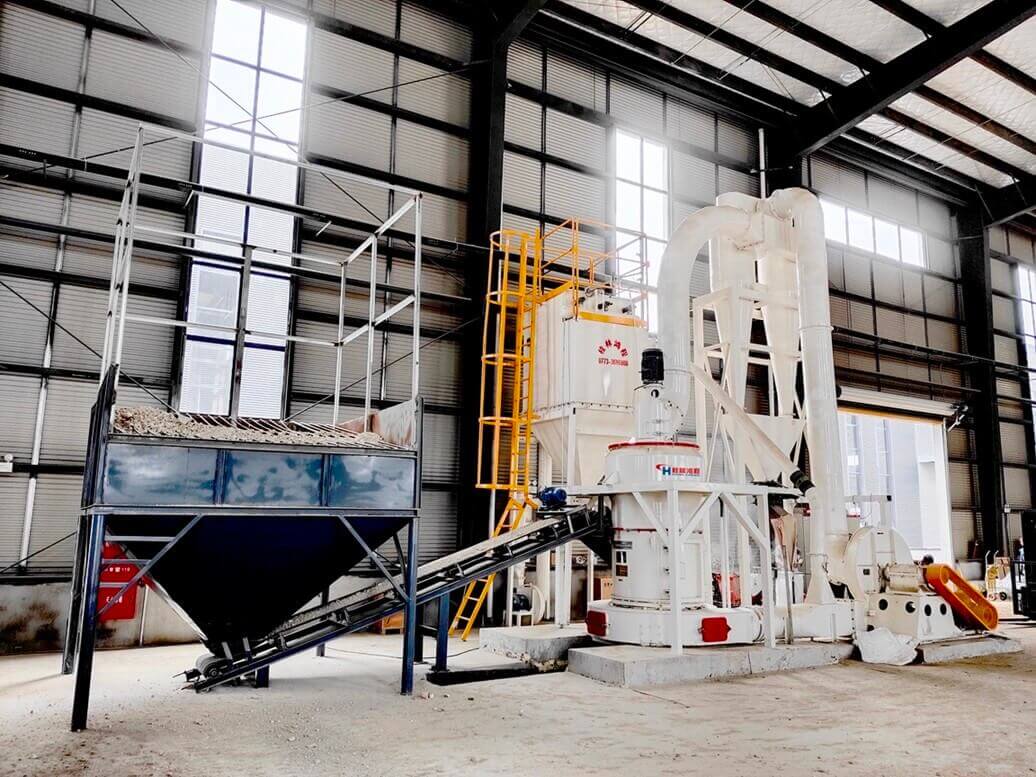The comprehensive utilization of coal gangue in the field of building materials mainly depends on its mineral composition. Coal gangue, which contains kaolin and other clays as its main mineral component, is rich in potentially active aluminosilicates and can be used as a substitute for natural clay to produce cement raw materials or fired ceramsite. At the same time, these potentially active aluminosilicates After activation, aluminosilicate mineral components can also be used as admixtures to prepare gangue cement. However, there is a problem of insufficient reactivity to completely replace clay. Coal gangue, which is mainly composed of feldspar and other minerals, has low potential activity and needs to be processed by a gangue grinding machine to improve its activity. As a manufacturer of coal gangue grinding mill, today Guilin Hongcheng will introduce to you the technology of coal gangue processing and building materials.
1. Used to produce cement
The production of mixed cement clinker is the main way to comprehensively utilize various industrial solid wastes. Coal gangue is dominated by clay minerals, of which the total content of SiO2, A12O3 and Fe2O3 is generally more than 80%, which can replace or partially replace clay as a raw material for cement production. Coal gangue, quicklime and other raw materials are ground in a certain proportion and calcined to form cement minerals. Since coal gangue contains a certain amount of residual carbon, it can continuously release heat during the calcination process, effectively reducing energy consumption in cement production. Research shows that the addition of coal gangue can reduce the cement calcination temperature by 50~100℃. However, coal gangue also contains a large amount of quartz, and its reactivity is much lower than the active aluminosilicates in clay materials, which seriously restricts the application of coal gangue as a clay substitute in the construction industry.
2. Concrete mineral admixtures
Although the chemical structure of coal gangue is relatively stable, because it contains clay minerals, it is necessary to use certain physical and chemical methods to change its structural state and thereby improve its reactivity for use as concrete mineral admixtures.
3. Concrete aggregate
Coal gangue with feldspar and quartz as the main minerals has excellent strength, so using coal gangue as aggregate to prepare concrete building materials is a promising comprehensive utilization method. Zhang Daming et al. used alkaline dry powder and sodium hydroxide solution as activators to prepare gangue concrete. The results showed that the compressive and flexural strengths of concrete prepared using coal gangue and activators were 27.9% and 21.3% higher than ordinary concrete, respectively. Mainly because the NaOH in the alkaline activator can promote the dissolution of the silicon-aluminum phase and react with Ca(OH)2 to form calcium silicate and aluminate. The strength of concrete prepared by using alkaline dry powder activator is better than that of hydroxide. Concrete prepared from sodium solution. In addition, the carbon and organic matter remaining in the gangue will continue to undergo oxidation reactions and release heat during the long-term curing process of the concrete, which can easily lead to problems such as concrete cracking.
4. Fired ceramics
Concrete prepared with lightweight aggregate has many advantages such as light weight, high strength, and good thermal insulation effect. Relevant research results show that the incorporation of gangue ceramsite helps to improve the microscopic pore structure of concrete. When the dosage reaches 40%, the compressive strength is optimal. Industry experts use gangue ceramsite to prepare lightweight concrete, which reduces the shrinkage rate of concrete and improves the stability of concrete products. At present, due to the advantages of lightweight concrete with excellent performance and low construction cost, fired ceramsite has become one of the main directions for comprehensive utilization of coal gangue.
5. Preparation of fired bricks
Coal gangue is rich in aluminosilicate minerals such as kaolin and feldspar. These minerals have similar compositions to the clay used in fired bricks, thus providing the feasibility for coal gangue to be used as the main raw material for the preparation of fired bricks. In the preparation process, the remaining carbon, organic matter and other components in the coal gangue undergo oxidation reactions under the action of high temperature, releasing heat and reducing the sintering temperature. Research shows that bricks sintered from coal gangue have optimal properties at a temperature of 1200°C. Industry experts use coal gangue and fly ash as the main raw materials to prepare sintered bricks. The results show that when the proportions of fly ash and coal gangue are 60% and 35% respectively, the sintered bricks can reach the MU30 level. Industry experts use 10% sludge, 40% coal gangue and 50% shale to prepare sintered bricks with a strength level of MU15 through sintering at 1050°C. Industry experts use coal gangue and red mud to bake porous bricks. The total mixture of the two The volume reaches 75% and the intensity level reaches MU18. However, the application range of sintered bricks in building materials is relatively narrow, so this method restricts the efficient and comprehensive utilization of coal gangue.

Coal Gangue Raymond Mill, welcome to leave a message or consult [email protected]
Coal gangue processing and building materials technology is inseparable from the help of grinding mills. As a manufacturer of coal gangue grinding mills, Guilin Hongcheng's Raymond mill, vertical mill and other equipment provide good equipment assistance for coal gangue processing and building materials technology. It can process 80-600 mesh coal gangue powder and can fully stimulate the reaction activity of coal gangue. If you have relevant needs, please leave a message for details of the equipment.